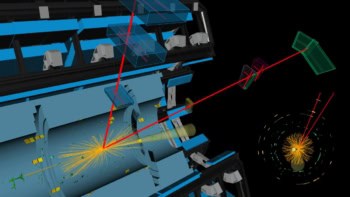
The Large Hadron Collider (LHC) will switch on again the end of June next year, according to a report that will be published later today by CERN.
On 19 September 2008, nine days after the highly successful “switch on” day in which the LHC circulated its first proton beams, commissioning of the accelerator was interrupted as an electrical fault damaged part of the machine. The fault generated an electrical arc that punctured the cooling enclosure, allowing some six tonnes of liquid helium to evaporate into the tunnel with such ferocity that it broke floor anchors and magnet connections.
At the time, the LHC operations team was commissioning for operation at energies of 5 TeV, and had not yet collided any protons.
Upgrade of pressure-release valves
James Gillies, the chief spokesperson for the CERN particle-physics lab near Geneva, told physicsworld.com that engineers will upgrade pressure-release valves on the machine’s focusing or “quadrupole” magnets to prevent such a helium discharge being so damaging in the future.
This involves warming up the relevant sectors and lifting out 53 magnets to perform the necessary repairs. So far three sectors have been warmed up and 28 magnets have been lifted out. Two magnets have already received the upgrades and are back in place.
Engineers will also upgrade the valves on the dipole magnets, which steer the proton beams. However, they will only do this when the sectors containing those magnets are warmed up for other reasons. “It really is extremely cautious to do this,” says Gillies.
Although it is unlikely that beams will reach their full energy of 7 TeV next year, they should be able to collide at a record-breaking 5 TeV.



